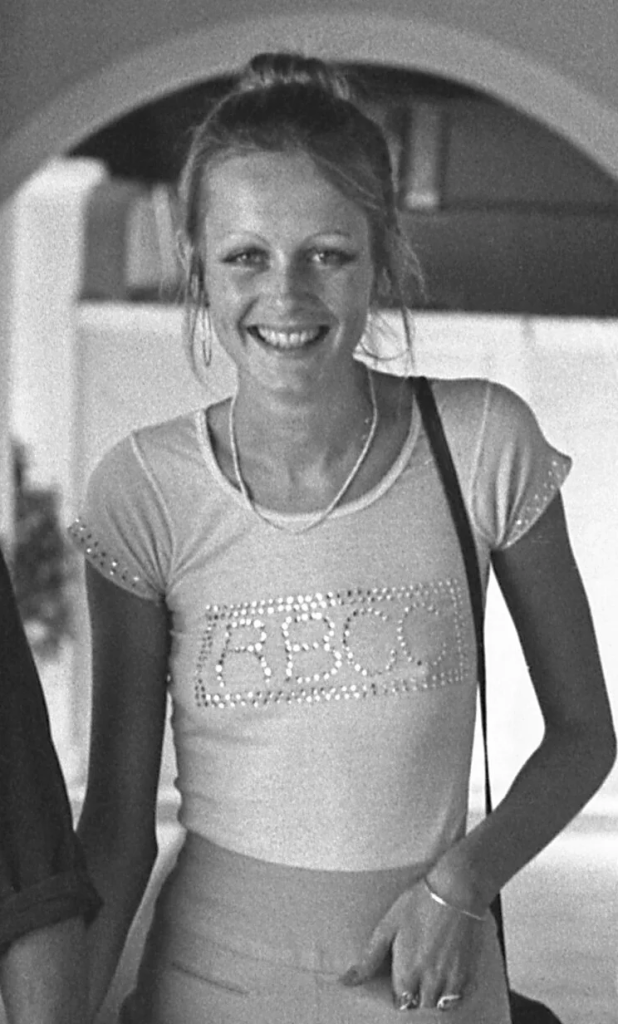
The Transformation of Our Bodies and Diets
In the 1970s, a visit to the beach was a showcase of lean, active bodies. People of all ages enjoyed the sun, surf, and sand with a level of fitness that seemed effortless. Fast forward to today, and the scene has drastically changed. The prevalence of overweight and obese individuals has skyrocketed, painting a stark contrast to the svelte figures of the past. This shift prompts us to examine the role of the food industry in this dramatic transformation.

The 1970s: A Different Era of Eating
During the 70s, the typical diet was markedly different from what we see today. Meals were often home-cooked, with fresh ingredients forming the backbone of family dinners. Processed foods were available but not ubiquitous. Fast food chains were fewer, and eating out was considered a treat rather than a regular occurrence. Portion sizes were smaller, and sugary snacks were less prevalent in households.
Physical activity also played a significant role in the lives of people in the 70s. Without the convenience of digital entertainment, children and adults alike spent more time outdoors, engaging in physical activities. Walking, cycling, and participating in sports were common pastimes.
The Rise of Processed Foods
The landscape began to change with the rise of processed foods and fast food chains in the late 20th century. The food industry, driven by profit, began to prioritize convenience and shelf-life over nutritional value. High-fructose corn syrup, hydrogenated oils, and an array of artificial additives became staples in many foods. These ingredients made food cheaper and more accessible but also less healthy.
Marketing strategies targeted at children and busy adults further entrenched these unhealthy eating habits. Fast food advertisements promised quick, tasty meals at low prices, and snack companies created products that were hard to resist due to their high sugar and salt content. This aggressive marketing, combined with the convenience of ready-made meals, led to a significant increase in the consumption of unhealthy foods.
The Impact on Public Health
The consequences of these changes in diet have been profound. Rates of obesity have soared, bringing with them a host of health problems, including diabetes, heart disease, and various forms of cancer. According to the World Health Organization, worldwide obesity has nearly tripled since 1975. In many countries, the number of overweight children and adolescents has increased tenfold over the same period.
The food industry’s influence extends beyond what we eat to how we perceive food. Portion sizes have increased dramatically, and the notion of what constitutes a normal serving has become distorted. Additionally, the emphasis on convenience has led to a decline in cooking skills, with many people relying heavily on pre-packaged meals and fast food.
Moving Towards a Healthier Future
Addressing this issue requires a multifaceted approach. Public awareness campaigns can educate people about the dangers of processed foods and the benefits of a balanced diet. Governments can implement policies to regulate the marketing of unhealthy foods, particularly to children, and promote healthier options. Schools can play a crucial role by providing nutritious meals and incorporating nutrition education into their curricula.
On an individual level, making a conscious effort to prepare meals from fresh ingredients, controlling portion sizes, and increasing physical activity can help counteract the damage done by the food industry. Embracing a lifestyle reminiscent of the 70s, where home-cooked meals and outdoor activities were the norm, can pave the way towards a healthier society.
You Won’t Believe What Iconic Model Twiggy Looks Like at 73!

Twiggy, known for her elfin face and big blue eyes, made a bold move when she chose a pixie hairstyle, creating a unique look that has been copied for decades.
Although Twiggy changed the fashion industry with her youthful style, she recently shared that she never actually wanted the androgynous buzzcut that became her signature look in the Swinging Sixties. She was just too shy to say no to a famous hairstylist at a fancy salon.
As she celebrates her 74th birthday on September 19, let’s take a trip back to the 1960s when Twiggy first introduced the baby doll styles we still love today!
In 1966, Twiggy, born Lesley Hornby in Britain, was seeking a trendy new look to kickstart her modeling career. At only 5-foot-6, she was considered too short to make it in the competitive fashion world.
Reflecting on her upcoming 74th birthday, the former supermodel recalled getting her shoulder-length hair styled for test photos at London’s House of Leonard. There, she met the famous British stylist Leonard Lewis, known professionally as Leonard of Mayfair.
Lewis was searching for models to try his new crop haircut, and Twiggy was the perfect fit.
In a recent guest appearance on Jessie Ware’s podcast, “Table Manners,” Twiggy, the former style icon, revealed that she never wanted to have her hair cut short.
“I went in to have it shampooed and set, and Leonard saw me. He said, ‘Let me try my new haircut on you,’” Twiggy told Ware during the podcast. “I’d been growing my hair, and for a moment, I wasn’t sure if I wanted it cut. But I was in this very fancy salon in Mayfair and felt too shy to say no, so I just nodded.”
The next day, Twiggy went back to the salon and sat in Leonard’s chair, preparing herself for the change.
“I was there for seven hours. He cut it, then I went out, had it colored, and came back for more cutting. It was crazy,” she said with a laugh.
Although the androgynous look wasn’t what Twiggy was aiming for, she quickly understood why Leonard was a famous stylist.
After Leonard perfected Twiggy’s short blonde haircut, British photographer Barry Lategan took her pictures.
“Leonard put one of the photos up in the salon, and a journalist from the Daily Express named Deirdre McSharry saw it while getting her hair done,” Twiggy explained. “That’s how it all started. When that haircut and photo happened, it was a pivotal moment for me.”
The pixie cut made her large blue eyes stand out, and she emphasized them with mascara on her lower eyelashes.
In a chat with Vogue, Twiggy shared the inspiration behind her famous eye makeup: “I was always experimenting with makeup at home. I had a rag doll with spiky eyelashes, so I bought false eyelashes and created my own unique look.”

Twiggy, the former supermodel, shared that when she was young, she liked to rebel a bit. On weekends, she would wear makeup and miniskirts to Saturday night mod clubs with her friends, even though her school was very strict.
“I went to a grammar school where we wore uniforms, and makeup wasn’t allowed,” Twiggy said. “So on weekends, my friends and I would play with makeup like most teenage girls.” This is how her unique makeup style developed, especially her iconic eye look.
A few weeks after the photoshoot for the Daily Express, some now-famous black-and-white pictures of Twiggy appeared in the paper with the headline “Twiggy—The Face of ’66.” This launched her modeling career.
The next month, Twiggy did her first shoot for Vogue, and her life quickly became very busy. She became a major figure in mod fashion and inspired many women. While still a teenager, she even became the first celebrity to have a Mattel Barbie doll modeled after her.
Over the next few years, Twiggy became closely associated with the famous British designer Mary Quant. Mary Quant changed fashion with short skirts, giving women the freedom to show their legs.
After a few years of modeling, Twiggy retired in 1970 and started acting in movies and on stage, as well as singing.
Twiggy starred in several movies, including “The Boy Friend” in 1971, a role that won her two Golden Globes, and “Club Paradise” in 1986, where she acted alongside Robin Williams.
She also judged on “America’s Next Top Model” and created a fashion line for Marks & Spencer. She appeared in many of the brand’s billboard ads.
In 2011, Twiggy released an album called “Romantically Yours,” which features cover songs like “Blue Moon,” “They Can’t Take That Away from Me,” and “Right Here Waiting.” Her daughter, Carly Lawson, born in 1978, sang on some of the tracks.
Still active in the fashion world, the beautiful Twiggy was an ambassador for L’Oreal and works with other brands as a designer.
These days, the famous Twiggy is busy with her own podcast called “Tea with Twiggy.” Each week, she talks with her famous friends in a relaxed and personal way.
Despite all her success, Twiggy, one of the most well-known faces of her time, says her greatest achievement is her relationship with her amazing daughter.
Twiggy’s daughter, Carly, lost her father, actor Michael Witney, when she was just five years old. He passed away during Carly’s fifth birthday celebration. After that, Carly was raised by her mom, Twiggy, and Twiggy’s second husband, Leigh Lawson, whom she married in 1988.
“Family is my number one priority,” said Twiggy, who is also a grandmother. “It always has been, even when Carly was little. If something didn’t work for Carly, I didn’t do it. We went everywhere together, and that’s why we’re so close now. The other day, Carly said, ‘I can’t remember a time when you weren’t there, Mum,’ and that’s because I was always there. Even when I traveled, she came with me.”

Many women envy Twiggy for how well she pulled off that pixie cut in the 1960s! She looked gorgeous then and still looks amazing now.
What do you remember about the Swinging Sixties? What’s the most daring hairstyle you’ve ever tried?
Share your stories and let’s show Twiggy some love on her birthday!
If you enjoyed reading about how Twiggy’s style has evolved, check out how Catherine Deneuve looks today. She also had her big break in the 1960s.



Leave a Reply